The longevity of the EV battery is the question that often lingers in the minds of potential EV buyers. Battery degradation can affect not only the range of the vehicle but also its resale value, making it a crucial aspect to consider.
A recent case involving a Tesla Model 3 owner has garnered attention. The owner reported retaining an impressive 95% of the vehicle’s battery capacity even after clocking in 135,000 miles. This real-world example serves as a compelling case study to explore battery longevity, charging habits, and the overall reliability of electric vehicles, particularly Tesla’s offerings.
Table of Contents
Lifespan of Tesla Battery
It’s essential to note that battery technology has come a long way, and newer models are showing promising signs of longevity. A recent survey of Tesla Model 3 owners provides some empirical evidence to challenge the prevailing skepticism. According to the survey, the average battery capacity of a Tesla Model 3 remained at around 90% even after five years of use. This data suggests that while battery degradation is inevitable to some extent, it may not be as severe as commonly believed, especially in newer models equipped with advanced battery technology.
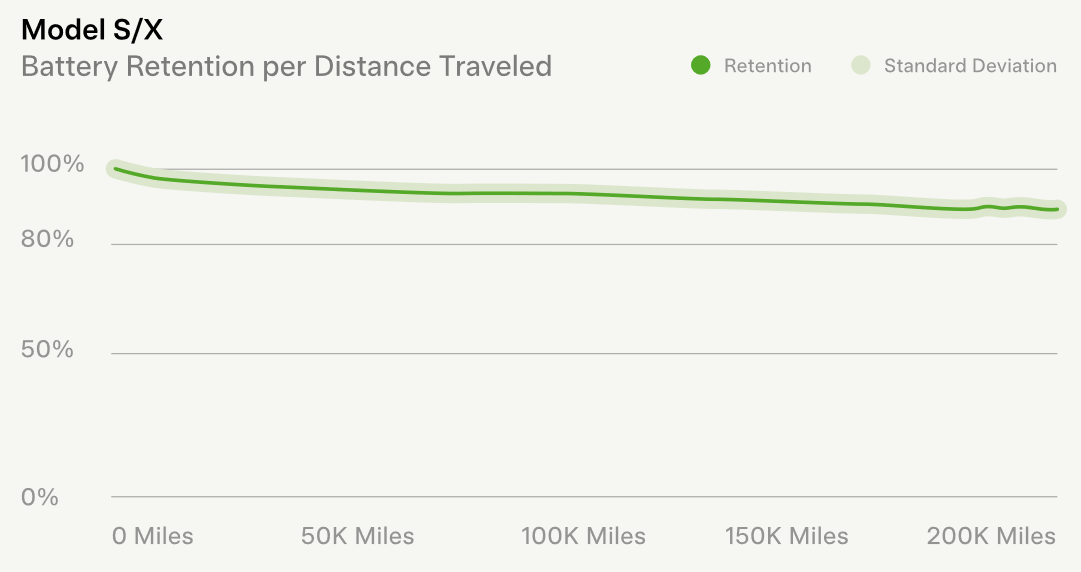
Advantages of LFP Over NMC
While the focus is often on the more commonly used Nickel-Manganese-Cobalt (NMC) and Nickel-Cobalt-Aluminum (NCA) batteries, it’s important to give special attention to Lithium Iron Phosphate (LFP) batteries. These batteries are typically used in Tesla’s standard range models and come with their own set of advantages and considerations.
One of the most significant benefits of LFP batteries is their resilience to frequent charging cycles. Unlike NMC and NCA batteries, LFP batteries can be charged up to 100% for daily driving without experiencing significant degradation. This makes them an excellent option for those who may not have consistent access to charging infrastructure and need to make the most out of each charging session.
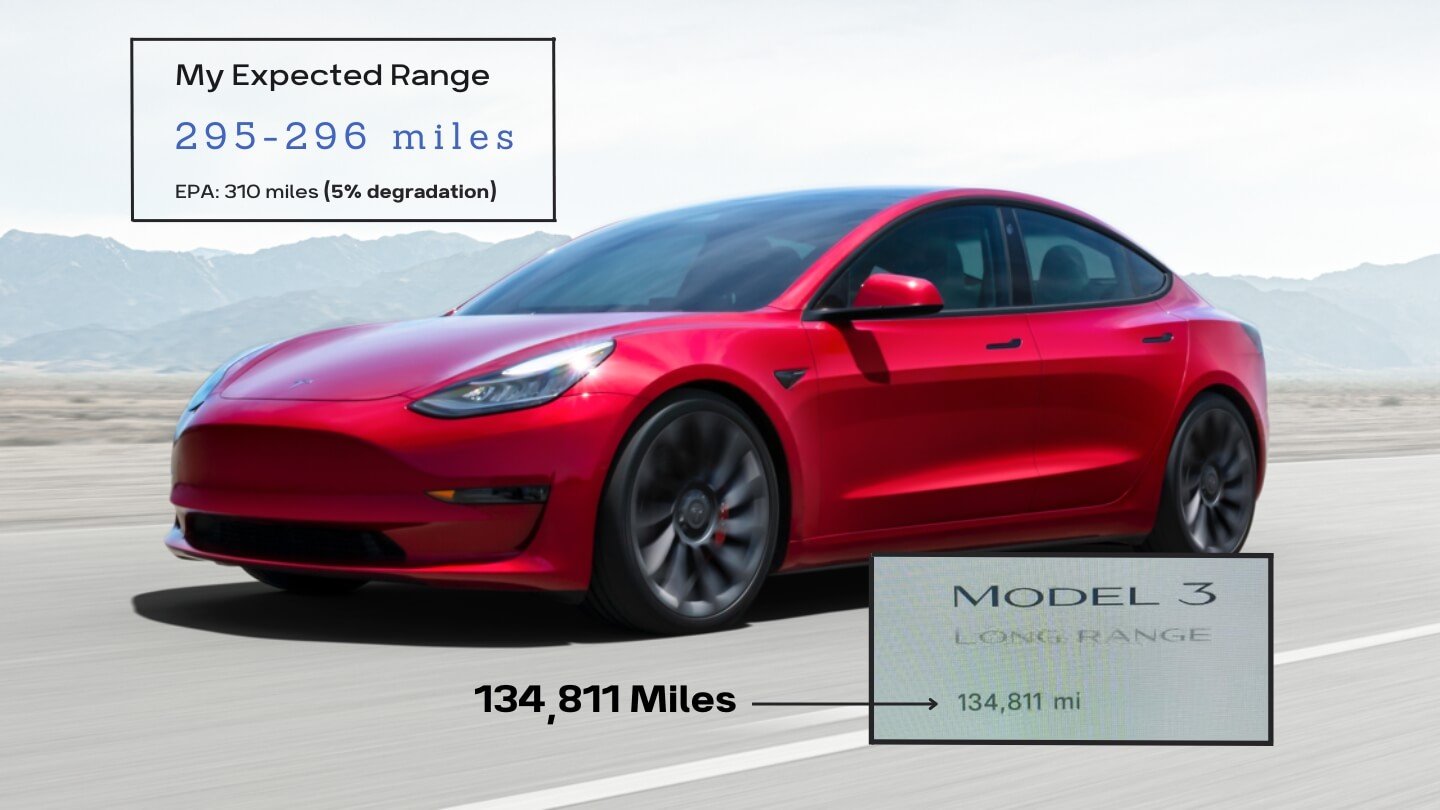
Tesla Model 3 Battery Capacity After 135,000 Miles
In the realm of electric vehicles, real-world experiences often serve as the most compelling evidence for or against the technology. One such case that has caught attention is that of a Tesla Model 3 owner who has managed to retain 95% of the car’s battery capacity even after driving 135,000 miles. This case serves as a valuable example to delve into the specifics of battery longevity, charging habits, and overall reliability.
Charging Habits
The owner attributes this impressive battery retention to meticulous charging habits. Unlike many who rely on the convenience of fast charging, this individual has primarily used Level 1 and Level 2 chargers for the majority of the vehicle’s life. These chargers, although slower, are known to be less stressful on the battery, thereby contributing to its longevity.
The Tesla Model 3 in question uses a Nickel-Cobalt-Aluminum (NCA) battery, which is known for its high energy density but also its sensitivity to high charging levels. The owner has followed Tesla’s recommendation of limiting the charge to 80% for daily use, a practice that has evidently paid off in terms of battery health.
Rethinking the Impact of Supercharging on Tesla
While the case study and general recommendations emphasize the benefits of Level 1 and Level 2 chargers, it’s worth noting that recent studies have challenged the notion that Supercharging has a detrimental effect on Tesla batteries. A comprehensive study by Recurrent analyzed data from over 6,300 Tesla vehicles in the United States and found no statistically significant difference in battery degradation between vehicles that are frequently fast-charged and those that are rarely fast-charged.
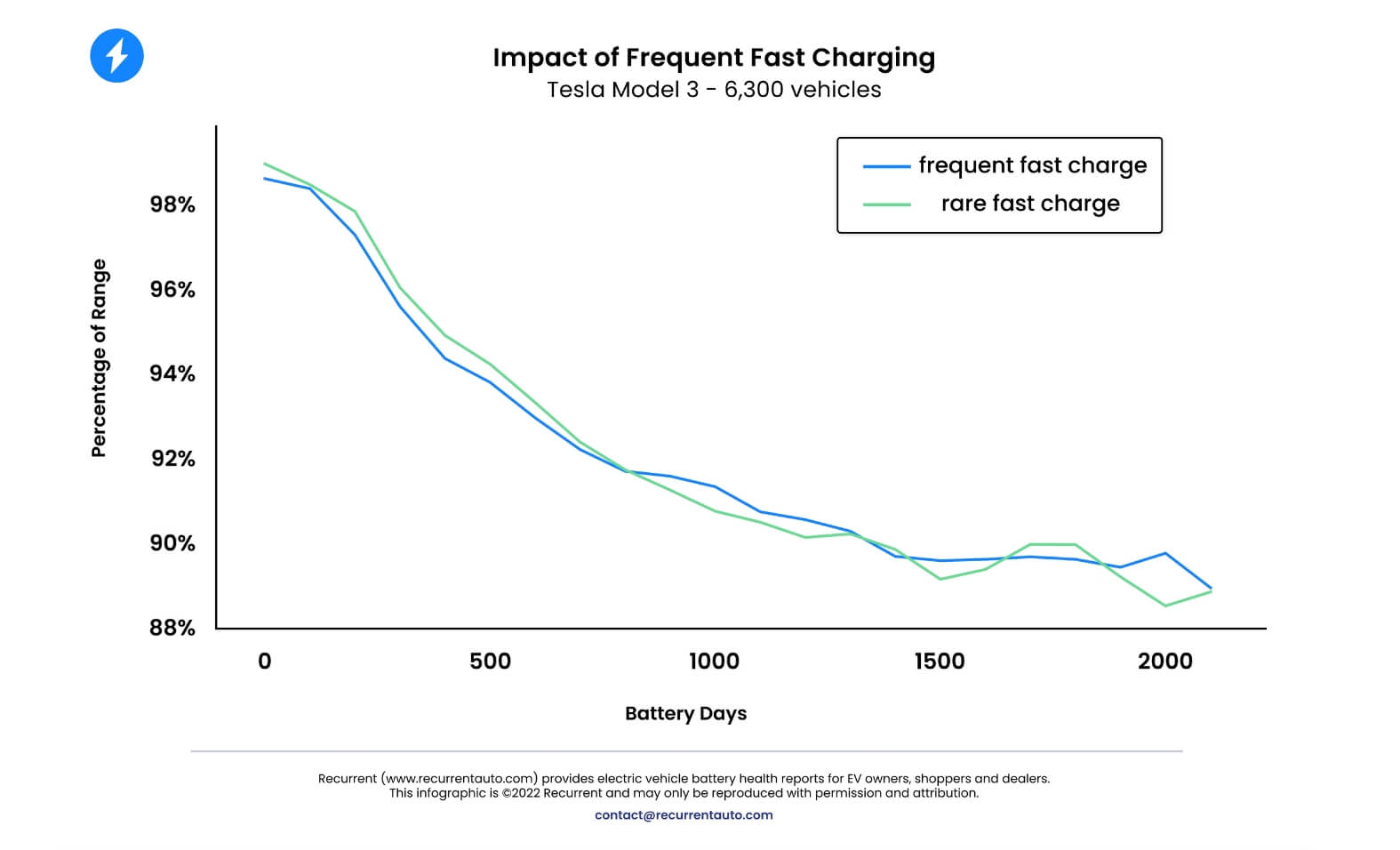
This finding suggests that Tesla’s battery management system effectively protects the battery during fast charging sessions, allowing owners to use Superchargers without worrying about long-term battery health. However, the study does recommend preconditioning the battery in extreme temperatures to ensure optimal performance.
EV Battery Recycling
As electric vehicles continue to gain popularity, questions about the environmental impact of used batteries are becoming increasingly relevant. A common misconception is that once EV batteries reach the end of their life, they become an environmental burden, destined for landfills. However, this couldn’t be further from the truth.
In reality, used EV batteries have significant recycling potential. Various components, such as the metals and materials used in the battery cells, can be extracted and reused. Companies are already investing in technologies to make the recycling process more efficient and cost-effective. Some batteries even find a second life in energy storage systems, where the requirements for capacity and performance are less stringent than in vehicles.
What Happens to Electric Car Batteries at the End of Their Life?
The notion that used EV batteries contribute to landfill waste is a myth that needs debunking. With advancements in recycling technologies and growing awareness of the need for sustainable practices, used batteries are increasingly being repurposed or recycled. This not only alleviates the environmental impact but also creates opportunities for these materials to be used in new batteries, further extending their lifecycle.
Conclusion
The longevity of electric vehicle batteries has been a topic of much debate and concern, but real-world experiences like that of the Tesla Model 3 owner who retained 95% battery capacity after 135,000 miles are starting to paint a more optimistic picture. This case study serves as a testament to the quality of Tesla’s batteries and the effectiveness of proper charging habits.
As electric vehicles continue to evolve, it’s clear that battery technology is advancing in tandem. The longevity of Tesla’s batteries, as evidenced by real-world experiences, suggests that with proper care and attention to charging habits, EV owners can expect a long-lasting and reliable battery. This not only contributes to the vehicle’s overall value but also supports a more sustainable and environmentally friendly transportation option.




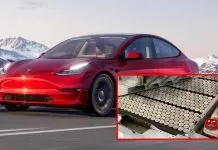












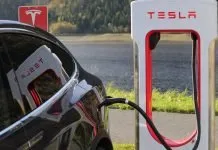

Well written, rigorous and informative article.
Thanks !